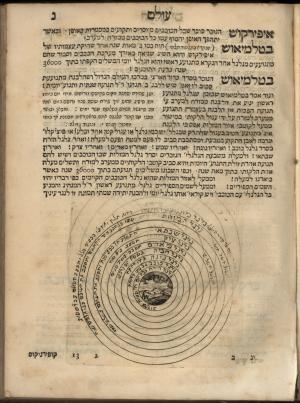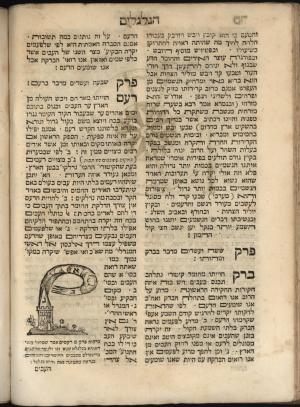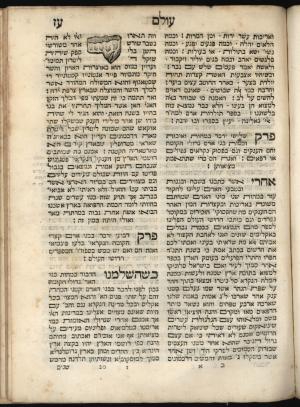Obj. ID: 37352
Jewish printed books Ma'aseh Tuviah by Cohn Tobias ben Moses, Venice, 1707

This text was prepared by William Gross:
A celebrated encyclopedia of natural sciences, as well as a lexicon of pharmacological and botanical terms in Hebrew, Latin and Turkish; and most significantly, an important section on medicine, including anatomy and gynecology. The book includes discussions on the medical properties of tobacco a description of the 'plica polonica" (Latin for "Polish plait" a hair disease), and an examination of the Magdeburg experiment on the vacuum. The author also discusses the future redemption and the theological and social consequences of the Sabbatian debacle (see pages 24-29). The author, Tobias Cohen, or Tuviah ben Moshe Katz (1652-1729) was born in Metz and raised by relatives in Cracow and his father's untimely death. He studied medicine in Italy at the University of Padua and went on to serve as a court physician in Turkey. Ma'aseh Tuviah was written in Adrianople, today Edirne. See EJ, Vol. V, cols. 692-693 and JE, Vol. IV, pp.161-162.
Tobias ben Moses Cohn (1652-1729) studied medicine at the University at Padua and practiced in Poland and in Turkey where he became a physician to five successive sultans in Constantinople, before retiring to a life of Torah study in Jerusalem. Ma’aseh Tuviyyah, Cohn’s magnum opus, is a profusely illustrated encyclopedia dealing with theology, astronomy, cosmography, geography and botany, with medicine taking up about half of the entire work. The author describes the system of Copernicus but rejects it on religious grounds. On the other hand, he enthusiastically endorses William Harvey’s newly discovered system of blood circulation. One of Cohn’s innovations is the comparison of the human body to a house. The head was the roof, the eyes the windows, and the mouth was the doorway; the chest was the upper story, the intestines were the middle story, the lungs were water tanks, and the legs were foundations.
The volume contains one of the most famous anatomical plates in a Hebrew book (p.106r) and numerous scientific text illustrations. There is an Italian approbation of Ecclesiastical authorities on the final page.
The first edition of this "most influential early modern Hebrew textbook of the sciences, especially medicine.... No other Hebrew work dealing exclusively with medical and scientific matters was so widely read and appreciated." See D. B. Ruderman, Jewish Thought and Scientific Discovery in Early Modern Europe (1995), pp.229-55.
164 leaves (8 x 6 in.; 205x 152mm). Foliations:(6), 1-90 (2), 93-130 (1), 132-158. Sectional title pages with architectural borders; frontispiece with portrait; numerous illustrations.
There are four other editions in the Gross Family Collection.
Maaseh Tovia, astronomy and research, medicine and anatomy, by R. Tovia Katz HaRofeh (Tobias Cohn, physician). Venice, [1707]. First edition. Numerous illustrations and diagrams, including a portrait of the author at the age of 48 on the verso of the title page. A detailed illustration of the human body including the internal organs, paralleling it to a multi-story building, is featured on p. 106a. Approbation by R. David Oppenheim and Venetian rabbis. Poems in praise of the author and book





















